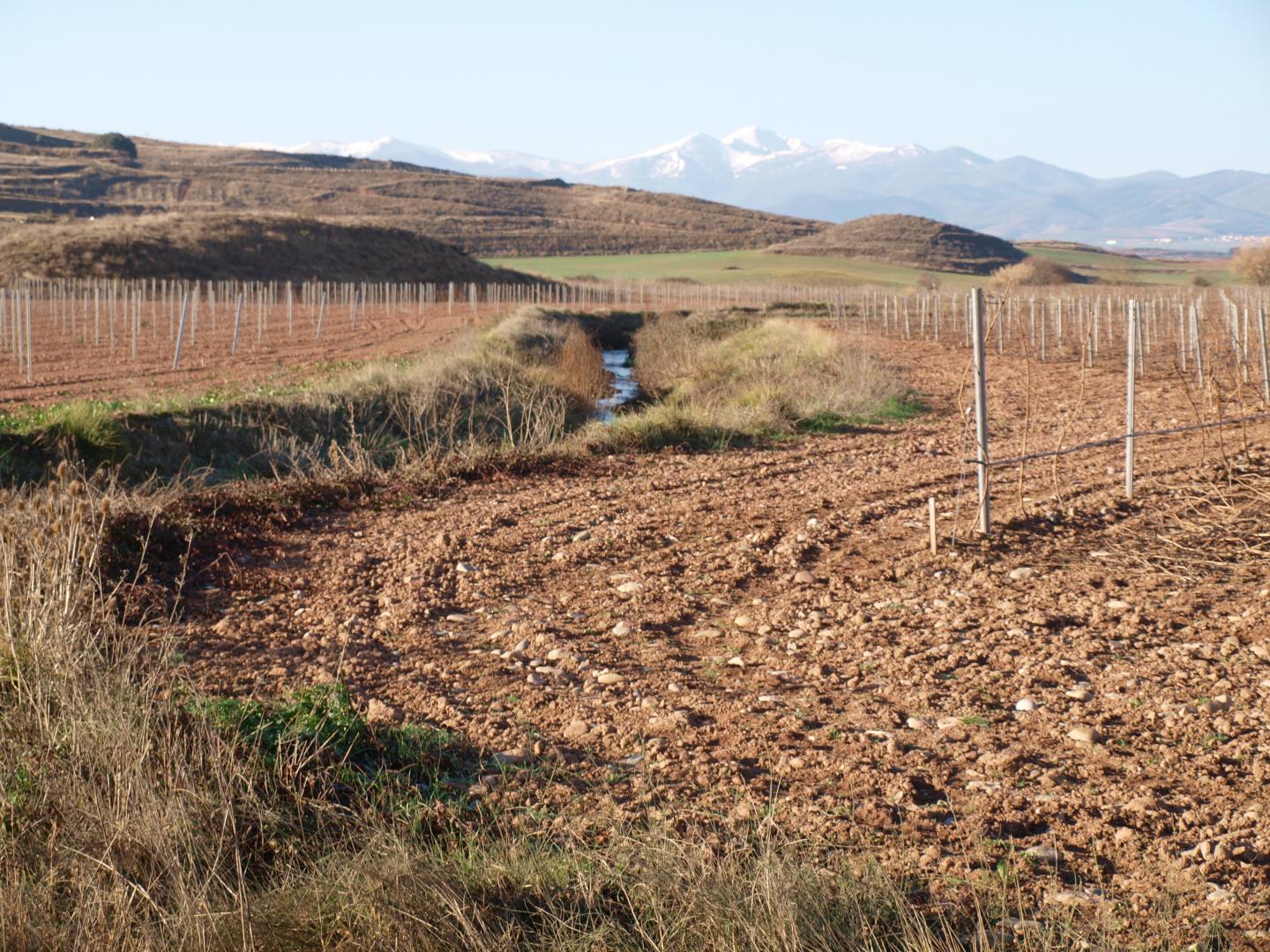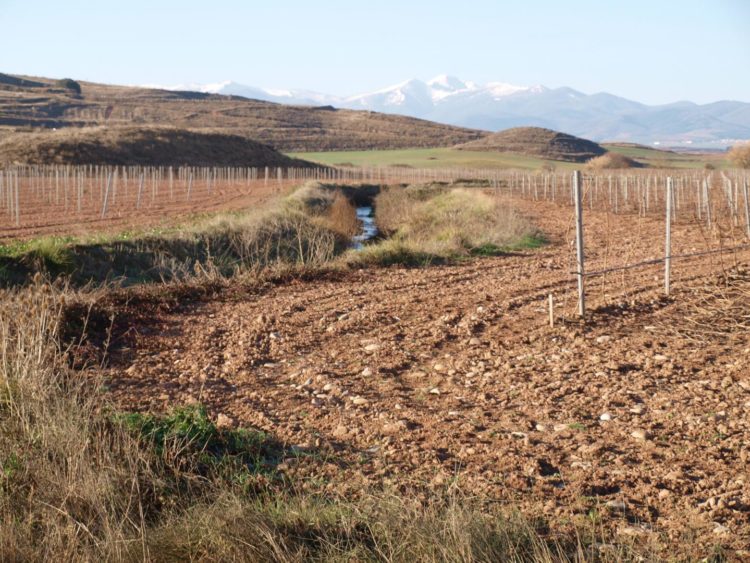Water ecosystems with high nitrate concentration

Credit: Rubén Ladrera (University of La Rioja, Spain)
Insects, crustaceans and other water macroinvertebrates are more affected by the effect of sediment accumulation in river courses than the excess of nitrate in water environments, according to a study published in the journal PLOS ONE. Sediments that get accumulated in rivers -due intensive agriculture and deforestation in gallery forests- alter the ecological traits of fluvial habitats and deteriorate the biological communities at all levels.
The following experts take part in the new study: Narcís Prats and Miguel Cañedo-Argüelles, from the Faculty of Biology and the Water Research Institute (IdRA) of the University of Barcelona, Rubén Ladrera and Rafael Tomás, from University of La Rioja (UR), and Óscar Belmar, from the Institute of Agrifood Research and Technology (IRTA).
Water ecosystems with high nitrate concentration
The new study focuses on fluvial systems located in the Nitrate Vulnerable Zones (NVZs) in Spain -the Ebro valley, in western areas of the Autonomous Community of La Rioja- where farmers are required a series of requirements from the current regulation to recover the quality of the water. This area has shown one of the highest concentrations of nitrates in shallow waters in the Ebro basin.
Researchers have studied -in different water courses of their work area- the community of water macroinvertebrates, which are one of the top bioindicators of the state of water courses. “The ecological features of these communities of macroinvertebrates -that is, what they eat, the substrates they choose, how long they take to reproduce, etc.- are a trustworthy indicator for the ecological state and allow us to determine the quality of the water habitat indirectly”, notes Miguel Cañedo-Argüelles, member of the Freshwater Ecology Hydrology and Management Research Group (FEHM) of the UB and IdRA.
“According to the study, the communities of water macroinvertebrates reveal a poor ecological state of rivers surrounding these areas vulnerable to pollution due nitrates from agricultural sources in La Rioja”, continues Cañedo-Argüelles, from the Department of Evolutionary Biology, Ecology and Environmental Sciences of the UB. “However, the poor ecological state would not solely result from nitrate toxicity but from the water habitat damaging due the accumulation of sediments in the river caused by the effect of deforestation and agricultural practices”.
What happens when physical features of the water habitat are altered?
In the natural environment, ecological impacts cause an important alteration of these water ecosystems. The high concentration of nitrates -which is four times higher than the 25 mg/l the EU Water Framework Directive indicates as the maximum tolerable level in water ecosystems- is toxic for some organisms “and this favors an excessive growth of algae and water plants so that the chemical composition of water and the water habitat are altered”, notes Rubén Ladrera, expert from the University of La Rioja and first author of the article.
“In any case, the main impact comes from the physical alteration of the water habitat -which is mainly associated with the fine sediment accumulation- and not the excess of nitrate in the water. There is a movement in the taxon that live on the largest substrate and increases the density of invertebrates that live in fine sediments”, notes Ladrera. “Other affected organisms are those that feed from microalgae or those that breathe through gills. Consequently, opportunist taxons able to adapt the intense alteration of the habitat end up dominating the environment and those organisms-indicators of the good ecological state of rivers disappear”.
Applying the current regulation and protecting water ecosystems
Since 1991, the European Nitrates Directive tries to protect the quality of water through the reduction of nitrates from agricultural sources and the promotion of good agricultural practices. This regulation is part of the Water Framework Directive, which sets legislative rules on the protection of water ecosystems in the European field for all water masses of Europe to reach the good ecological state from 2021 to 2027.
“For some years, sustainable agricultural models have been proposed to reduce environmental impacts in general and especially regarding the water ecosystems. European Directives on water and environment management call for these measures to be taken in order to guarantee the good ecological state of rivers. However, these measures are not always taken seriously enough”, says Rubén Ladrera.
Miguel Cañedo-Argüelles believes “it is necessary to include the quality of water habitats in the environmental monitoring plans of these areas. Our study reveals the habitat degradation -mainly the disappearance of gallery forest areas- is the main impact on water ecosystems. Unless this impact reverses, it will be hard to reach the good ecological state the Water Framework Directive requires. It is necessary to strengthen the fulfilment of the environmental management plans in these areas by paying special attention to the preservation of these habitats and natural hydro-morphological traits of rivers”.
###
Media Contact
Rosa Martínez
[email protected]
0034-934-035-544
Related Journal Article
http://dx.





